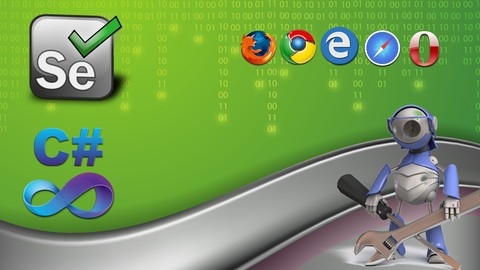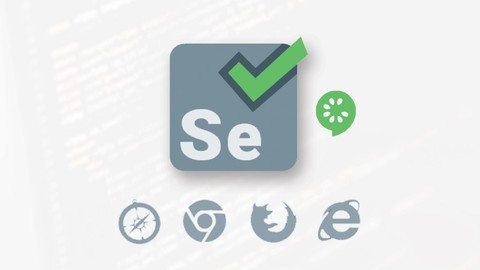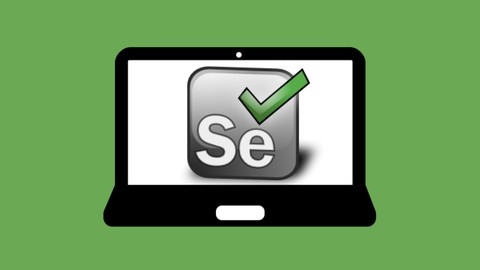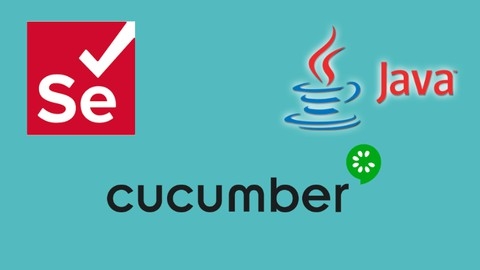Selenium WebDriver with Java -Basics to Advanced+Frameworks
The course starts by introducing Selenium and its features, covering the WebDriver architecture to give you a solid foundation.
You’ll learn to install Java, Eclipse, and Maven, setting up projects from scratch.
It guides you through running tests on popular browsers like Chrome, Firefox, and Edge using their respective drivers.
The course then dives into brushing up on Java concepts crucial for Selenium automation, including variables, data types, arrays, ArrayLists, strings, and methods.
It even provides an in-depth 7-hour Java learning module for manual testers and beginners.
Next, you’ll explore various locator techniques like ID, name, class name, CSS selectors, XPath, and link text to identify web elements.
The course covers advanced locators, parsing text, and automating browser navigations and window properties.
You’ll learn to automate web elements like dropdowns, checkboxes, calendars, and alerts using Selenium WebDriver APIs and assertions.
The course also covers functional testing, adding items to an e-commerce cart, and implementing programming logic.
Synchronization concepts like implicit, explicit, and fluent waits are explained with practical examples.
You’ll automate AJAX calls, child windows, and iFrames using Actions class and window handling techniques.
The course includes real-time exercises on retrieving links, opening them in new tabs, handling calendar UIs, scrolling tables, and parsing strings.
It covers miscellaneous topics like handling HTTPS certifications, taking screenshots, and identifying broken links.
You’ll learn to automate web table sorting, pagination, and filtering using Java Streams.
The course introduces Selenium 4’s latest features like relative locators, multiple window handling, and capturing element screenshots and dimensions.
The course then dives into building a robust Selenium framework using TestNG, covering annotations, parameterization, data providers, listeners, parallel testing, and reporting.
You’ll learn object-oriented principles, the Page Object Model design pattern, and implement it in the framework.
The framework section covers test configuration, global properties, parallel execution, data parameterization from JSON files, screenshot utilities, and extent reports.
You’ll integrate the framework with Maven for terminal execution and Jenkins for CI/CD.
Additionally, the course covers integrating Cucumber for behavior-driven development, version control with Git, cross-browser testing using Selenium Grid, Excel data-driven testing, file uploads/downloads, Chrome DevTools integration for mobile testing and network traffic inspection, and connecting databases to test cases.
The course wraps up with core Java concepts like loops, conditions, interfaces, inheritance, overloading/overriding, arrays, collections, exceptions, and OOPS interview questions.
Selenium Webdriver with PYTHON from Scratch + Frameworks
The course starts by explaining the importance of Python testing and why Selenium is a great choice for test automation needs.
You’ll get a glimpse of Selenium’s features before diving into the complete installation guide for Python and Selenium on different operating systems like Windows and MAC.
The course covers Python basics extensively, including data types, variables, program flow control with conditions and loops, functions, and object-oriented programming principles.
You’ll learn how to read and write files in Python, handle exceptions, and set up the Selenium Python package for executing tests on different browsers like Chrome, Firefox, and Edge.
One of the key focuses is understanding different locators in the WebDriver API and techniques to automate web elements like dropdowns, checkboxes, radio buttons, and alerts.
The course also covers crucial concepts like synchronization with implicit and explicit waits, enabling you to build robust and reliable tests.
You’ll dive into functional automation with real-world examples, handling advanced user interactions, child windows, and frames.
Additionally, the course covers miscellaneous topics like JavaScript executors, sorting web tables, and Chrome options.
The real highlight is the comprehensive end-to-end project that ties everything together, allowing you to practice complete methods in Selenium.
You’ll learn to select products, complete the checkout process, handle auto-suggestive dropdowns, and more.
It delves into framework design, teaching you the popular Pytest unit testing framework for Python.
You’ll learn how to run tests, group them, use fixtures, generate HTML reports, and implement data-driven testing.
The course also covers logging, integrating the framework with Jenkins for continuous integration, setting up job parameters, and reading/writing data from Excel files.
You’ll even get a bonus section on understanding version control with Git and Github.
Throughout the course, you’ll have access to code files, practical examples, and assignments to reinforce your learning.
The instructor provides clear explanations, making it easy to grasp complex concepts.
Selenium 4 WebDriver with Java(Basics + Advance + Architect)
The course covers Selenium from the ground up, starting with an introduction to Selenium and its components.
You’ll learn about the different versions of Selenium and the new features introduced in Selenium 4.
The course dives deep into Core Java concepts essential for automation and framework design, making it suitable for manual testers and beginners.
From basic programming to advanced topics like exception handling, collections, and OOPS concepts, you’ll gain a solid foundation in Java.
Moving on to Selenium WebDriver, you’ll learn about handling elements, synchronization issues, relative locators, screenshots, and advanced features like actions API, JavaScript executor, and handling SVG graphs and shadow DOM elements.
The course also covers the new Chrome DevTools Protocol in Selenium 4, allowing you to simulate various scenarios like SSL certificates, geo-locations, and network conditions.
You’ll explore popular testing frameworks like TestNG and Cucumber (BDD), learning how to generate interactive reports, parameterization, data-driven testing, and parallel execution.
The course covers setting up Selenium Grid for parallel test execution across multiple browsers and machines.
Integration with tools like Jenkins (CI/CD), Git, GitHub, Maven, and cloud platforms like SauceLabs is also covered.
You’ll learn to design robust automation frameworks following the Page Object Model and Data/Keyword-Driven approaches.
The course includes live project work, assignments, and commonly asked interview questions, ensuring you gain practical experience.
Selenium WebDriver with Java for beginners
You’ll start by learning the fundamentals of Selenium WebDriver and Java for test automation.
The course guides you through setting up your environment, including installing Maven and the Eclipse IDE, creating a new Maven project, and troubleshooting common issues.
You’ll even learn how to access the course’s code on GitHub.
Once your environment is ready, you’ll dive into creating your first basic Selenium WebDriver test.
You’ll understand the test application, create test classes and methods, run tests with TestNG, debug problems, identify page elements and locators, work with WebElements and WebDriver commands, handle invalid locators, and implement verifications and assertions.
The course then focuses on mastering TestNG with Selenium tests.
You’ll explore the TestNG Eclipse plugin, practice with homework assignments, and learn to create and run tests for incorrect usernames and passwords.
You’ll also build and run TestNG test suites, which is crucial for organizing and executing multiple tests together.
Next, you’ll discover the benefits of the TestNG framework, such as its documentation, grouping tests, using suite parameters, combining tests, utilizing Before/After annotations, and enabling cross-browser testing with Selenium and TestNG.
Debugging is a critical skill for any automation tester, and this course dedicates an entire chapter to it.
You’ll learn debugging techniques, exception handling, and how to solve common exceptions like NoSuchElementException, ElementNotInteractableException, InvalidElementStateException, StaleElementReferenceException, and TimeoutException.
You’ll also master the art of using WebDriver Waits, including implicit and explicit waits.
Throughout the course, you’ll have opportunities to practice what you’ve learned through homework assignments and quizzes, solidifying your understanding of Selenium WebDriver with Java.
Selenium WebDriver 4 With Java - Novice To Ninja [2024]
The course starts with an introduction to Selenium WebDriver, its architecture, and why it’s preferred over other automation tools.
You’ll learn how to set up the required tools and plugins, including Java, Eclipse, and Maven, on both Windows and Mac.
Next, you’ll dive into Java concepts like data types, classes, methods, and object-oriented programming principles.
This lays a solid foundation for understanding the code you’ll write later.
The course then focuses on Selenium WebDriver itself.
You’ll learn how to launch different browsers, inspect elements, locate elements using various techniques (ID, XPath, CSS selectors), and interact with web elements like buttons, links, dropdowns, and more.
You’ll also learn advanced interactions like handling date pickers, auto-complete fields, and taking screenshots.
One of the course’s strengths is its coverage of synchronization issues and wait types (implicit and explicit waits).
This is crucial for writing reliable automation scripts that don’t fail due to timing issues.
The course also covers JavaScript execution, switching between windows and iframes, and working with actions like mouse hover, drag and drop, and keyboard events.
You’ll learn how to handle common exceptions like NoSuchElementException and StaleElementException.
Moving on, you’ll learn about the Page Object Model design pattern and how to implement it in your automation framework.
You’ll also learn how to integrate logging using Log4j2 and reporting using TestNG and Extent Reports.
The course covers data-driven testing using Excel files, file uploads, and handling Windows authentication.
You’ll also learn about WebDriver event listeners and cross-browser testing using Selenium Grid.
Build management with Maven, version control with Git and GitHub, and continuous integration with Jenkins are also covered in detail.
The course includes real-time Selenium WebDriver interview questions and covers advanced topics like database testing, performance testing, and behavior-driven development using Cucumber.
Selenium WebDriver Masterclass with C#
The course starts by laying a strong foundation in C# programming concepts like variables, data types, classes, methods, and object-oriented principles.
You’ll learn how to write clean, maintainable code following best practices like DRY (Don’t Repeat Yourself) and SOLID principles.
The course then dives deep into Selenium WebDriver, teaching you how to locate web elements using various strategies like XPath and CSS selectors.
You’ll learn about implicit and explicit waits, a crucial concept for writing reliable tests.
The instructor also covers advanced topics like mouse and keyboard actions, drag and drop, developer tools integration, and handling dynamic web elements.
One of the course’s strengths is its emphasis on the Page Object Model (POM) design pattern, which promotes code reusability, maintainability, and scalability.
You’ll learn how to create robust page objects and organize your test suite effectively.
The course also covers test-driven development (TDD) principles, helping you write better tests from the start.
As you progress, you’ll build a complete automation framework from scratch, learning how to incorporate logging, reporting, and cross-browser testing using tools like Sauce Labs.
The course even touches on continuous integration and continuous delivery (CI/CD) with Azure DevOps.
Throughout the course, you’ll work on practical examples and coding exercises, ensuring you gain hands-on experience.
The instructor’s clear explanations and step-by-step approach make it easy to follow along, even if you’re new to Selenium or C#.
Additionally, the course covers advanced topics like automated visual testing with Applitools, regular expressions, lambda expressions, and more, providing a well-rounded learning experience.
Selenium WebDriver with Java & Cucumber BDD
The course starts by introducing you to testing and Selenium automation, giving you a demo of WebDriver in action.
You’ll learn how to install and use the Selenium IDE to record and run tests, modify test data, and export tests to Java code.
From there, you’ll dive into automating actions with Selenium WebDriver.
You’ll create a login test outline, open browsers with Selenium, understand HTML and the DOM, find elements using Chrome, simulate user actions, capture text and page titles, and more.
This hands-on section will teach you the core skills for web automation.
Next, you’ll learn different techniques for finding elements on a web page - by link text, name, ID, XPath, and CSS selector.
You’ll compare methods, learn their priority, interact with form elements, and complete a new account application as practice.
The course then enhances your test scripts with Java programming concepts like variables for parameterizing data and cross-browser testing using a DriverFactory class.
You’ll also learn algorithms for handling radio buttons and checkboxes, and how to generate conditional test results.
To take your skills further, you’ll explore testing frameworks like JUnit and TestNG.
You’ll write assertions to generate test results, use annotations to guide the test flow, set up test suites, and more.
This section will teach you industry best practices.
A key part of the course focuses on building a complete data-driven testing framework.
You’ll learn to read test data from CSV and Excel files, use JUnit @Parameters and TestNG @DataProviders to feed that data into your tests for robust, scalable automation.
There’s a full case study on testing a booking and reservation application, covering search pages, implicit waits, advanced XPath, switching windows, handling popups, and completing bookings.
The course also covers the Page Object Model design pattern for more maintainable tests, setting up page classes, using the PageFactory, and writing tests with page objects.
Finally, you’ll learn behavior-driven development (BDD) with the popular Cucumber framework.
You’ll write feature files in Gherkin, implement step definitions with Selenium, enhance features with data tables, parameterize data into steps, and execute BDD-style tests.
Selenium WebDriver + Java. Complete step by step course.
The course starts by introducing you to automation testing, covering its advantages, disadvantages, and when to use it.
The topics are divided into several chapters, beginning with Java Core.
You’ll learn the fundamentals of Java programming, including data types, loops, conditionals, arrays, classes, objects, methods, and core concepts like inheritance, interfaces, packages, and exception handling.
This lays a solid foundation for working with Selenium WebDriver.
Once you’ve grasped Java, the course dives into Selenium WebDriver itself.
You’ll understand what Selenium is, its architecture, pros and cons.
It covers installing and configuring Selenium, an essential step before you can start automating tests.
A major part of the course focuses on locating web elements using various strategies like ID, class name, XPath, CSS selectors etc.
You’ll learn the basics of HTML to better identify elements on web pages.
The course then teaches you how to interact with the driver - navigating to URLs, getting page details, handling popups and alerts.
You’ll learn commands to control the browser window size and position.
Working with web elements is crucial, so there are lectures on clicking, sending keys, checking visibility and state.
You’ll cover dropdowns, handling waits (implicit, explicit, fluent), and the differences between them.
Finally, the course introduces TestNG, a popular testing framework.
You’ll learn how to set it up, use annotations, and write tests.
Selenium WebDriver Java: Basic to Architect Bootcamp 2024
The course starts by setting up the Java and Python environments on Windows and Mac machines.
You’ll learn core Java and Python programming concepts like variables, data types, conditional statements, loops, functions, and object-oriented programming principles.
This lays a strong foundation before diving into Selenium.
For Java automation, you’ll master TestNG for test management, Maven for project build, and integration with reporting tools like Extent Reports.
The course covers WebDriver basics, locating elements, handling dropdowns, alerts, frames, windows, mouse/keyboard events, uploading files, and more.
You’ll implement data-driven testing frameworks from scratch using page object models.
The Python section teaches you to use Selenium WebDriver for automation testing.
You’ll work with Python data structures, file handling, reading/writing Excel, JSON, and property files.
The course guides you through creating a robust test automation framework in Python.
Key highlights are live project automation examples, best practices, coding exercises, interview questions, integration with Docker, Kubernetes, Google Cloud, and continuous integration using Jenkins and Git.
The course also covers Selenium Grid for parallel execution.
You’ll learn Cucumber BDD for writing automation test scripts in plain language, integrating it with page objects, generating reports, and using hooks and tags.
The examples are very practical, ensuring you gain real-world skills.
The course is very comprehensive, frequently updated, and packed with additional resources like bonus master classes.
Learn Selenium with Java, Cucumber & Frameworks
You’ll begin by learning the fundamentals of Java programming, including variables, data types, operators, conditional statements, loops, arrays, strings, and object-oriented programming concepts like classes, objects, methods, constructors, polymorphism, and inheritance.
This lays a solid foundation for working with Selenium WebDriver.
The course then dives into Selenium WebDriver, teaching you how to set up the environment, write your first script, and use various locators like ID, name, link text, CSS selectors, and XPath to interact with web elements.
You’ll learn essential WebDriver methods for navigation, handling alerts, frames, windows, tables, date pickers, mouse and keyboard events, and more.
To enable data-driven testing, the course covers reading and writing data to Microsoft Excel files using Apache POI.
You’ll also learn about the TestNG framework, including its annotations, parallel testing, listeners, and generating reports like HTML and Extent Reports.
The course introduces the Page Object Model design pattern, which is crucial for maintainable and scalable test automation frameworks.
You’ll then apply your knowledge by developing a hybrid-driven framework for an eCommerce application, covering all aspects from scratch.
Additionally, you’ll explore continuous integration (CI) concepts using tools like Maven, Git, GitHub, and Jenkins, enabling you to streamline your testing process.
The course also covers Cucumber, a popular Behavior-Driven Development (BDD) framework, allowing you to write tests in a more readable and maintainable way.
To enhance your skills further, the course covers SelectorsHub, a tool for identifying unique selectors, and Docker, a containerization platform that simplifies test execution across different environments.
Throughout the course, you’ll work with real-world examples and projects, ensuring you gain practical experience in addition to theoretical knowledge.
The course also includes interview preparation tips, helping you stand out in job interviews.
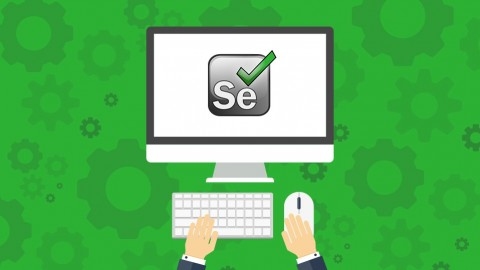

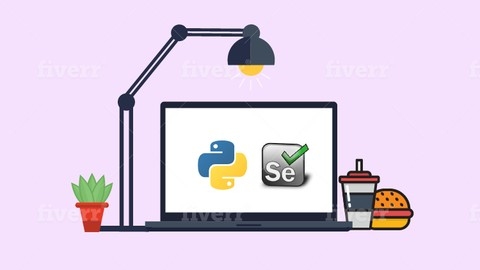
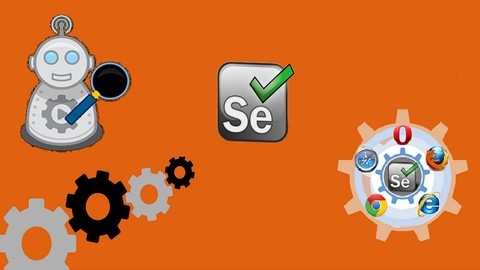
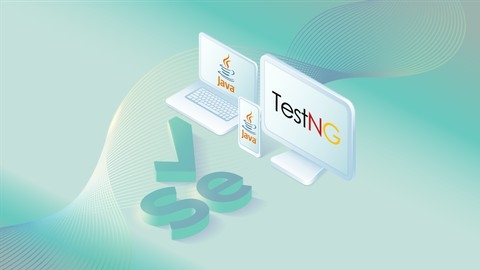
![Selenium WebDriver 4 With Java - Novice To Ninja [2024]](/img/best-selenium-courses-udemy/246652_SeleniumWebDriver4WithJava-NoviceToNinja2024.jpg)
